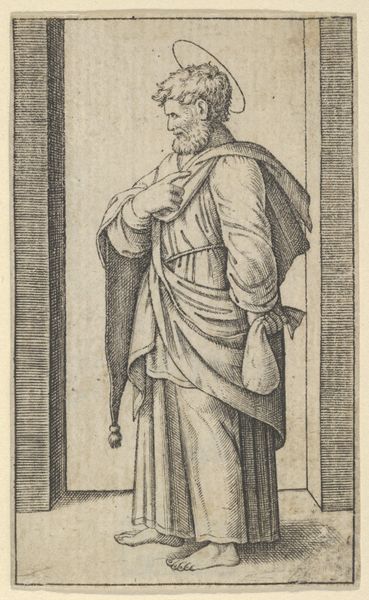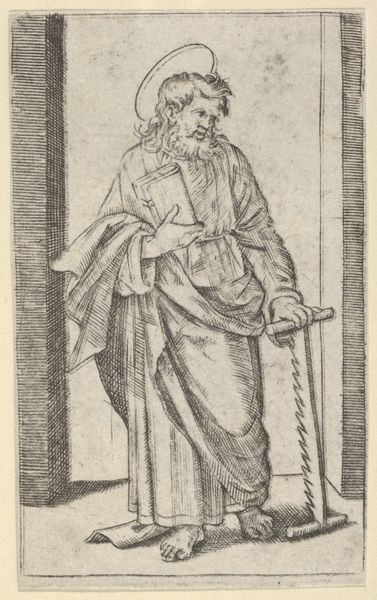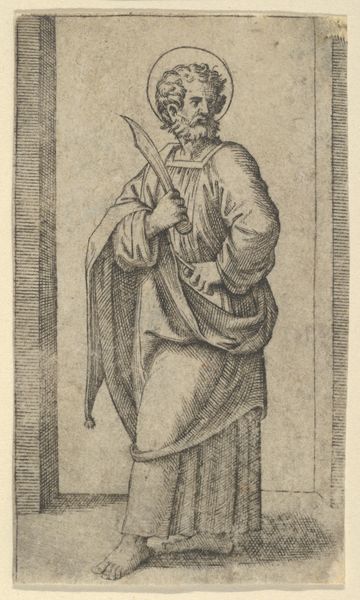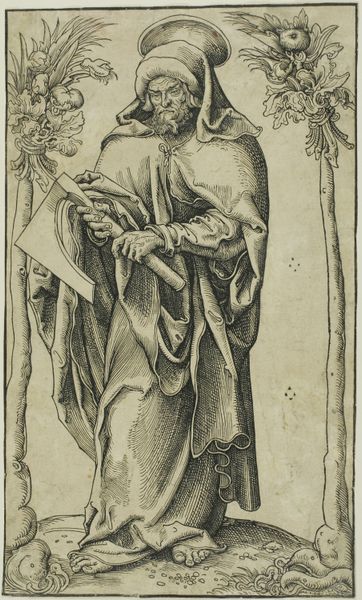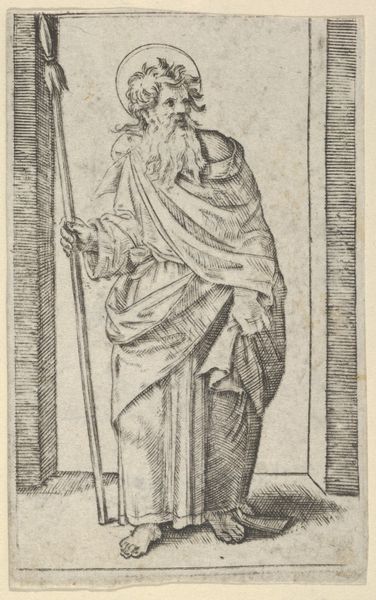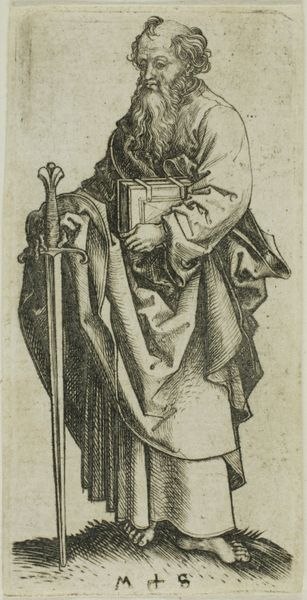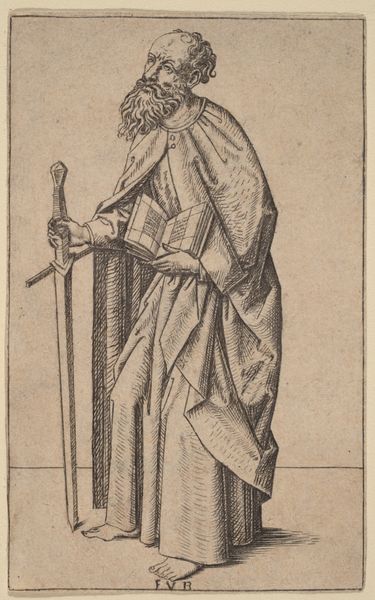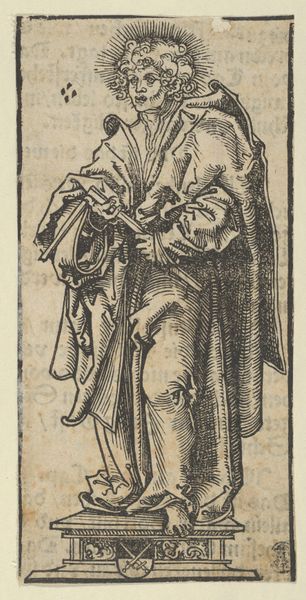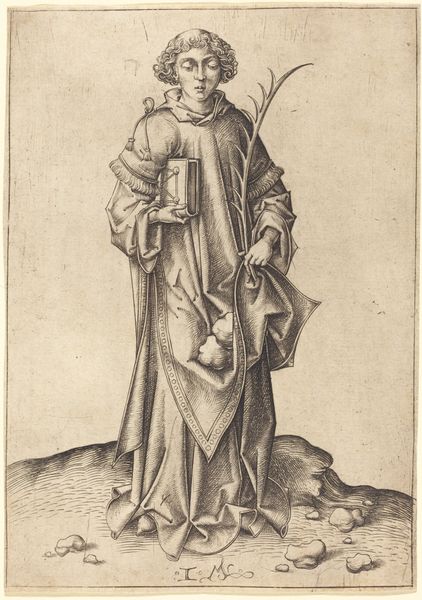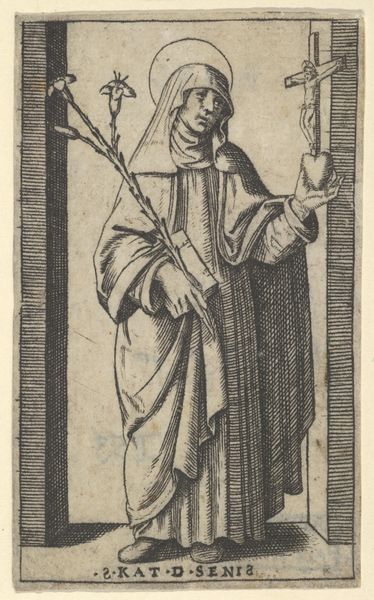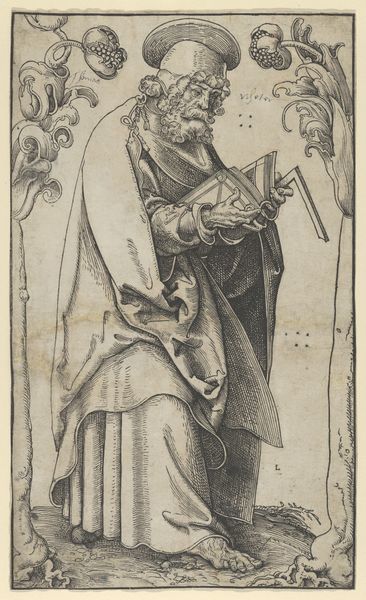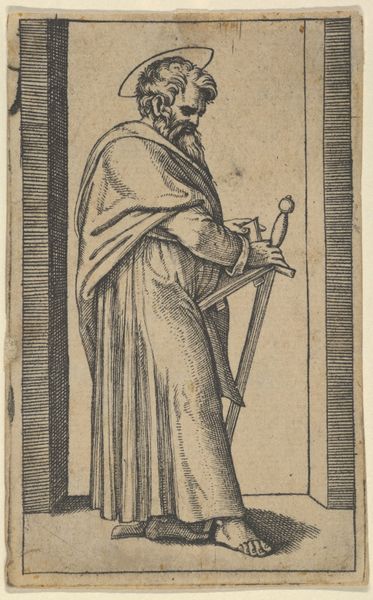
Christ, right hand raised in the gesture of blessing, from "Piccoli Santi" (Small Saints) 1495 - 1532
0:00
0:00
drawing, print, engraving
#
drawing
# print
#
figuration
#
history-painting
#
italian-renaissance
#
engraving
#
christ
Dimensions: 3 1/4 x 2 1/16 in. (8.3 x 5.2 cm)
Copyright: Public Domain
Editor: Here we have Marcantonio Raimondi’s engraving, “Christ, right hand raised in the gesture of blessing, from ‘Piccoli Santi’ (Small Saints), created sometime between 1495 and 1532. It's interesting how Christ is portrayed here, almost as a revolutionary figure, yet contained within this small, formally rigid print. How do you interpret this image in the context of its time? Curator: It's a fascinating piece when viewed through a socio-political lens. Consider the rise of humanism during the Renaissance. Raimondi, while working within established religious iconography, was also participating in a larger cultural shift, right? The representation of Christ becomes less about divine otherness and more about embodying certain virtues relevant to earthly life. Look at the deliberate way his hand gestures – it is not simply a blessing but an invitation, perhaps an acknowledgement of earthly struggles. Editor: So, you see this image as a dialogue between religious tradition and the burgeoning humanistic thought? Curator: Precisely. This print emerged during the peak of the Renaissance—an epoch where artists challenged societal norms, probed accepted dogmas, and began envisioning a world molded by human understanding. It is vital to probe the intersection of religious representation and shifting cultural ideals. It beckons the viewer to critically assess power dynamics in the church versus the autonomy and social activism of the emerging individual. Where might one find a correlation with present issues of race, identity or power? Editor: I hadn’t thought about it that way, seeing it more as a straightforward religious image, but I understand your point now. Thanks, that really broadens my understanding of the piece! Curator: And understanding context always makes our reading richer. Considering it alongside our modern cultural context is useful when reflecting on how history’s power struggles continue to repeat, resurface, and transform into modern challenges.
Comments
No comments
Be the first to comment and join the conversation on the ultimate creative platform.
